

WE WALK THE TALK.
CAMICO knows CPAs, because we are CPAs.

Created by CPAs, for CPAs, CAMICO’s guiding principle since 1986 has been to protect our policyholders through thick and thin. We are the program of choice for more than 8,000 accounting firms nationwide. Why?

CAMICO’s Professional Liability Insurance policy addresses the scope of services that CPAs provide.

Includes unlimited, no-cost access to specialists and risk management resources to help address the concerns and issues that you face as a CPA.

Provides potential claim counseling and expert claim assistance from internal specialists who will help you navigate the situation with tact, knowledge and expertise.
Does your insurance program go the extra mile? Visit www.camico.com to learn more.

FALL 2024
Publisher
Oregon Society of CPAs
Mailing address
10206 SW Laurel St., Beaverton, OR 97005-3209
503-641-7200 | 800-255-1470 | Fax: 503-626-2942 www.orcpa.org | information@orcpa.org
Chair
John Hawkins
Chair-Elect
Gary Holcomb
Vice Chair
Adam Abplanalp
Past Chair
Tracy Allen
Board of Directors
Tricia Duncan
Jonathan Grover
Cameron Irtifa
Megan Kurz
Michael Lortz
Tiffany Nash
Harriet Strothers
RL Widmer III
Yvonne Zbranak
President/CEO
Sherri McPherson, IOM, CAE
Managing Editor
Analiese Terrazas aterrazas@orcpa.org
Editor
Susan Fleming sfleming@orcpa.org
Chapter Council Chairs
Benton-Linn
Ross Holliday
Central Oregon
Yvonne Zbranak
Eastern Oregon
Jody Deardorff
Emerald Empire
Sarah Coffman
Mid-Columbia
Angelo Sampson
South Coast
Larry Reiber
Southern Oregon
Matthew Bowers
CONTENTS
FEATURES
Retirement readiness: It’s all about income 12
QM is approaching faster than you think — get ready 16
Member Spotlights 24
A day in the life with Natalie Heacock 26
Corporate Transparency Act/Beneficial Ownership Information Reporting
Risk management considerations for CPA Firms 30
DEPARTMENTS AND NEWS
Chair’s Message 5
Member News 7
OSCPA News 36
Professional Development 40
ADVERTISERS
CAMICO 2
The Oregon Society of CPAs assumes no responsibility for statements or advertisements herein and reserves the right to reject any advertising. Statements and opinions expressed are those of authors and not necessarily those of OSCPA. Publication of an advertisement does not constitute an endorsement of the product or service by Accounting Connect or OSCPA.
Update your contact information at www.orcpa.org/my-cpa/profile
Copyright© OSCPA 2024
Magazine design by Joleen Funk joleen.funk@gmail.com
Cover image by Fletcher Wold Photography
Stock images by istockphoto.com & stock.adobe.com
Connect with OSCPA


Accounting Practice Sales 4
Providence 6
Private Practice Transitions 9
CPACharge 10
Paychex 20
Oregon Community Foundation 23
The Partners Group 35
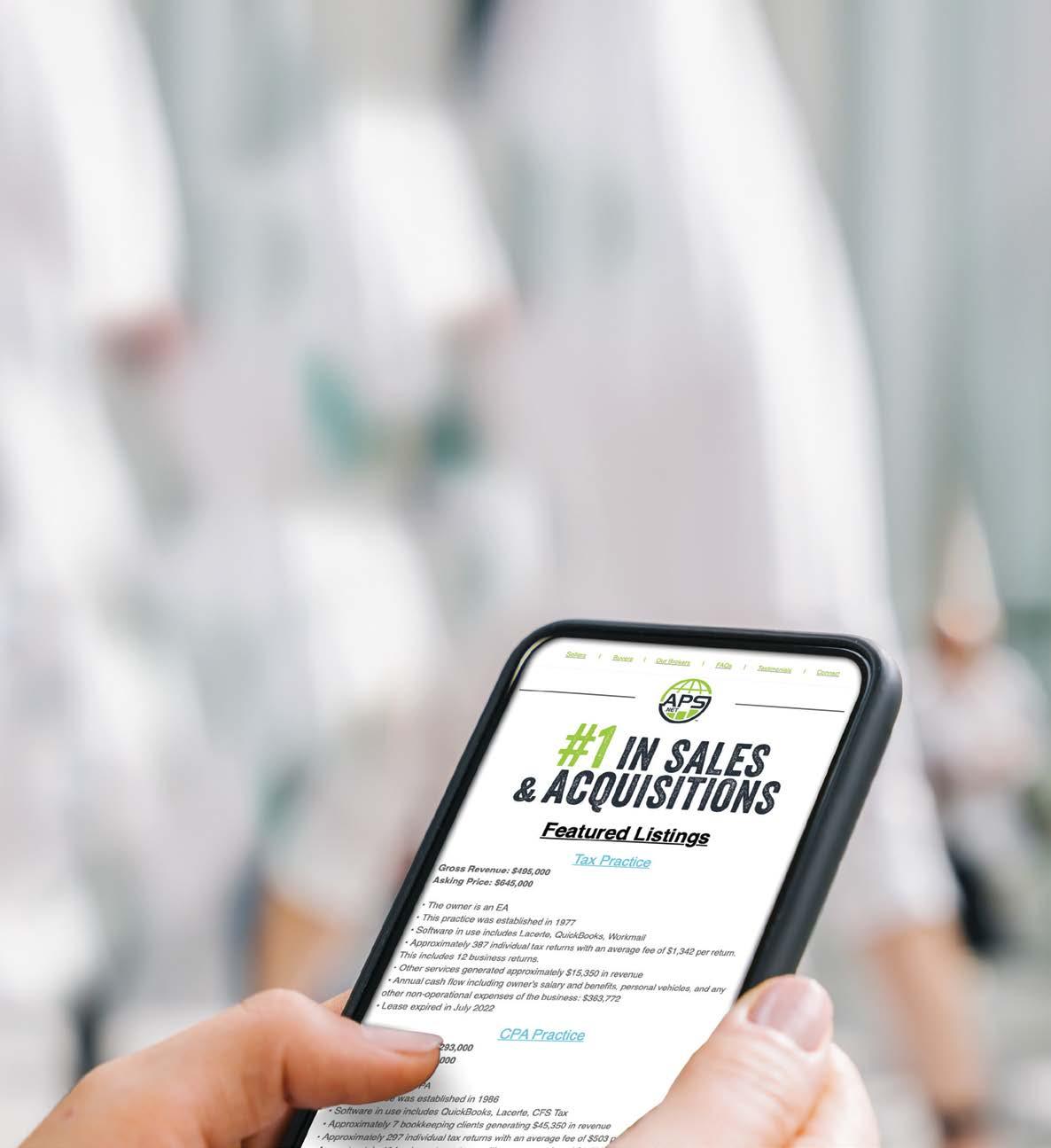


TACKLING THE ACCOUNTING TALENT SHORTAGE
John Hawkins, JD, CPA
Welcome to fall, the weather is cooler and it’s football season! I love the changing colors of the leaves at this time of year. I moved to Oregon from Tennessee 40 years ago and appreciate the cooler weather of the Pacific Northwest.
Students are back in class, both at K-12’s and at college. I thought I was done having children in school, but my son has started law school in his mid-thirties, attending my alma mater, Willamette University. I wish success to all students and well-being to the parents, especially the first-time empty nesters.
With students back in college, recruiting events are ramping up. The OSCPA had its Career Showcase at the Oregon Convention Center. It was a great evening with 22 exhibitors and about 90 accounting students and recent grads. Additionally, universities are hosting “meet the firms” events on campus. I enjoy seeing students’ excitement as they anticipate graduation and consider all their employment choices, from large to small firms to opportunities in industry and government.
From the employer angle, the spotlight continues to be on the talent pipeline. The final report from the National Pipeline Advisory Group was issued in July. My view of the pipeline challenge is to fill the pipeline with accounting students and then avoid leakage as students finish college and begin employment. The National Pipeline Advisory Group identified that by the time students get to college, they have often decided their major, so getting students interested in accounting careers at the high school level is key. I’m
developing my own personal schedule for classroom visits and encourage others to do the same.
A recent article in the Journal of Accountancy shared how academia is tackling the accounting talent shortage. I heard professors and students at the Career Showcase mention some promising themes. There is recent growth with enrollment in accounting majors, and more students are entering college knowing they want to major in accounting. Colleges are also placing their best professors in the introductory accounting classes to keep students interested and engaged. These are positive changes we need to continue to support.
Why do some students not want to major in accounting? A survey by the Center for Audit Quality lists 13 reasons. While any one reason scores only 20-30% as a major reason, all score high as part of the reason.
No one factor is causing the pipeline challenge. For example, the 150-hour requirement was about as important as not being good enough at math. It is the cumulative weight of all factors that contribute to students not choosing accounting as a major. Improving work-life balance, increasing starting salaries, and removing barriers to licensure will all help.
Some factors appear to stem from inaccurate perceptions of what accountants do. A “lack of variety in career paths” was listed as a deterrent to choosing an accounting major, though most working CPAs will tell you accounting is the language of business and opens many doors. We need
CHAIR’S MESSAGE
Reasons for not choosing accounting as a major:
Lack interest/passion
70%
Higher starting salary with other major 29% 61%
Don’t want to pursue 150 hours for CPA 28% 57%
Not good enough at math to become an accountant 28% 60%
Can’t afford 150 hours; need to start earning 25% 52%
Don’t have skill set
Courses are too difficult
Not much variety in career paths
57%
61%
59%
Accountants work longer hours than I want to 22% 53%
Too niche/specialized 20% 53%
Don’t see people like me represented in profession 18% 46%
I don’t want to take the CPA Exam 18% 56%
Peers who have pursued are unhappy 18% 55%
Source: Increasing Diversity in the Accounting Profession Pipeline: Challenges and Opportunities, CAQ/Edge Research, July 2023.
to tell a more compelling story about accounting careers. As AICPA Board Chair Carla McCall has said, “We need to promote the cool work we do.”
Every person reading this has a story to tell. I invite you to consider sharing your story with a classroom of young people. You don’t need to be a professional speaker. You just need to be grateful for your career and proud of the people you’ve helped. Then, speak from your heart. With students back in school, now is the season to take advantage of opportunities in our communities to build interest in accounting, strengthen the profession, and prepare for the future.
John

John Hawkins, JD, CPA 2024-25 Chair, OSCPA Board of Directors ChairJohn@orcpa.org



Enhanced benefits focused on access, lowering costs and improving member experience:
Increasing Telehealth Providers:
• Joon Care: Virtual behavioral health support for teens and young adults, ages 13-16.
• Behavioral Health Concierge: Quick access to virtual care with Providence providers, available extended hours 7 a.m. to 8 p.m., 7 days a week.
Programs Offering Cost Savings on Medications:
• Rx Savings Solutions: Free online tool that proactively shows savings on medications members use.
Providence Health Plan is delighted to continue our partnership with the Oregon Society of CPA’s Group Health Trust, offering accessible and affordable healthcare options for another year.

Personalized Support For Members:
• Care Management: Enhanced programs surrounding high risk maternity/fertility, transgender/gender diverse and disordered eating support.
Get your firm quote today!
Please contact The Partners Group at 503-726-5755 or e-mail OSCPAHealthPlan@ThePartnersGroup.com
Kudos & accomplishments
Clinton Bentz, Clint Bentz Consulting LLC, and Tyler Harris, Moss Adams LLP, spoke at the OSCPA Forest Products Conference.
Gregory Damico, Tax Advisors PLLC, and Alexander Miller, Geffen Mesher & Company PC, spoke at the OSCPA Real Estate Conference.
Hoffman Stewart & Schmidt PC is pleased to announce multiple promotions. Kristin Osorio and Nathan Stamets have been promoted to Shareholder. Jennifer Perrier was promoted to Director. Diana Tovar-Ches and Elexus Roth were promoted to Tax Manager. Emily Bertrand, Madison Weidner, and Emily Nowlin were promoted to Tax Senior.
Jonathan Howell, Howell Straczek LLC, spoke at the OSCPA Accounting & Auditing Conference.
Kernutt Stokes LLP is celebrating multiple work anniversaries. Andrea Smith and Richard Nellis celebrate 30 years. Lita Mylenek and Shelby Green celebrate five years.
Kathryn Maxson-Landis, Citrin Cooperman LLC, and Marissa Testori, Perkins & Co., spoke at the 2024 Bottles Brews & Buds Conference.
Amanda McCleary-Moore, Moss Adams LLP, and Ashley Osten, Moss Adams LLP, spoke at OSCPA’s Audits of State and Local Governments / Governmental Accounting and Financial Reporting Standards.
Collective CPAs, led by Kyle Pearson, served as a Silver Sponsor for the Down Syndrome Network of Oregon’s 2024 Buddy Walk.
Denise Petterborg, Irvine & Company LLC, spoke at OSCPA’s Summer Leadership Series: Leading / Succeeding in a Hybrid Environment.
Debbie Suchan, In Parallel Consulting Services, spoke at OSCPA’s Summer Leadership Series: How to Honor and Celebrate Your Team’s Introverts.
Lisa Tsuei was recently promoted to partner at Alten Sakai & Company LLP.
Jessica Ulrich, Moss Adams LLP, was accepted into the 2025 Portland Metro Chamber Leadership Program.
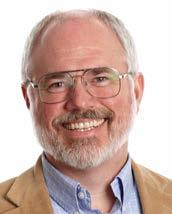
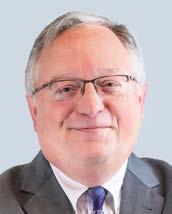
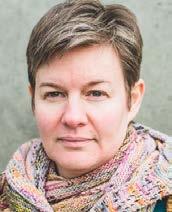
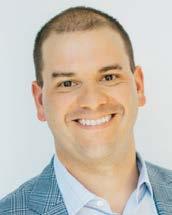

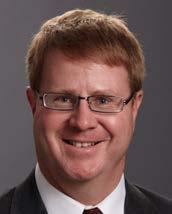
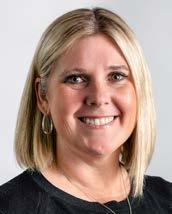
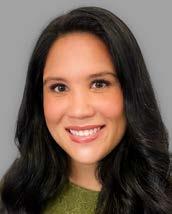
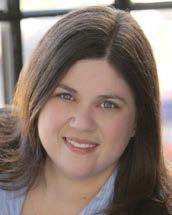
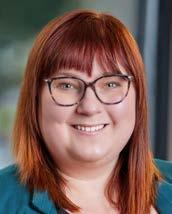
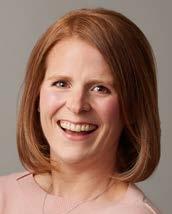
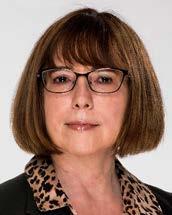

The OSCPA office will be closed:
November 27, 12:00 p.m. - November 29, 2024 December 24 - 25, 2024 December 31, 12:00 p.m. - January 1, 2025
Kudos & accomplishments



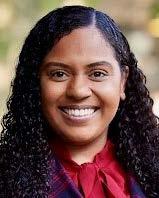
“This achievement has not only fueled my commitment to advance in my academic and professional journey but has also reassured me that I am heading in the right direction. I look forward to leveraging this accomplishment and to making meaningful contributions throughout my career in public accounting. —Javier Ruiz
“
Learn more about the 2024-25 Scholars: www.bit.ly/pcaobscholars
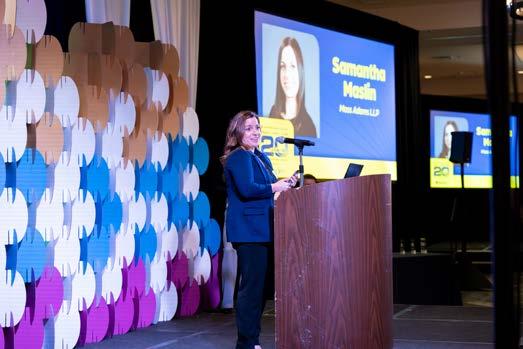
Sam Maslin, Moss Adams LLP, was named as a 20 Under 40 Rising Business Star by the Eugene Chamber Area of Commerce.

Natalie Heacock was promoted to president of Patrick Lumber Company.
Read about Natalie’s role on page 26.
Ciera Johnson, Javier Ruiz, Uriel Torres Torres, and Jontaya Ward were named 2024-25 PCAOB Scholars.
Welcome new members
Austin Alban Jr.
Abdullah Anwar
Tonya Bennett
Chrissy Bertsch
Nolan Bishop
Galen Bissonette
Isabella Bolong
Radule Bozovic II
Jacob Brown
William Cameron
Darcy Case
Jodi Cochran
Vincente Dao
Diane David
Daniel Davidson Jr.
Frank Dituri
Sarah Engle
Henry Fillmore
Karly Fleming
Yan Gao
Deanna Gentry
Alondra Gomez Camacho
Yesica Gonzalez Calderon
Jacob Hawkley
Steven Herrera
Christopher Huggins
Aleksandr Inzhirov
Dilrose Kaur
Justin Keegan
Asad Khan
Kacy Klugh
Michelle Knapp
Wendy Korman
Adijat Lawal
Dylan Lewis
Casey Leyes
Kelli Loo
Carrie Matos
Clifford Mo
Carla Moha
Gregory Nobes
Thomas Oliverius
Christian Ortiz Arciga
Nickolas Owens
MaryAnne Paget
Alicia Paine
Sheri Patterson
Jessica Penney
Ethan Postrel
Hetta Quade
Laurel Rieping
Alondra Ruiz Contreras
Elijah Rupp
Sytha Sanders
Angela Sayenko
Travis Stout
Daniel Striplin
Abigail Teel
Carlie Thompson
Jantz Tostenson
Erica Veatch
Travis Warneke
Mandie Webb
Stephen Wilcox
Travis Wilhoite
Alice Wilson
Jesse Woodall
Devon Yoder
Thomas Zynda

CPACharge has made it easy and inexpensive to accept payments via credit card. I’m getting paid faster, and clients are able to pay their bills with no hassles.
Trusted by accounting industry professionals nationwide, CPACharge is a simple, web-based solution that allows you to securely accept client credit and eCheck payments from anywhere. – Cantor Forensic Accounting, PLLC

22% increase in cash flow with online payments
65% of consumers prefer to pay electronically
62% of bills sent online are paid in 24 hours



Congratulations new CPAs
Congratulations new CPAs. We are proud and excited to welcome you to the profession.



Nathaniel Cantonwine
Rachael Coons, Lauka McGuire PC
Liliya Dobrei, Geffen Mesher & Company PC
Alyssa Downs, Brenner & Company LLP CPAs
Yesica Gonzalez Calderon, Moss Adams LLP
Emily Huckabone, Maginnis & Carey LLP
Kacy Klugh, Moss Adams LLP




Sandra Lang, Molatore Scroggin Peterson & Co. LLP
Emily Nowlin, Hoffman Stewart & Schmidt PC
Samuel Oldham, Geffen Mesher & Company PC
Angela Sayenko, Hoffman Stewart & Schmidt PC
Erica Veatch, Moss Adams LLP
Jesse Woodall, Moss Adams LLP
What advice would you give a new CPA?
“
Keep learning! You’re tired and you’ve just passed all the exams. Think about small ways you can continue to learn, to build your confidence and grow your skills. Ask for new tasks, ask questions, and do CPE!
— Alyssa Downs
Retirement readiness:
It’s all about
income

By
Rob Greenman, CFP® and Alex Canellopoulos, CFA, Vista Capital Partners
“Will I be financially ready to retire?” As financial planners, that is one of the most frequently asked questions we receive from clients—and it’s asked by people from a variety of backgrounds, phases of life, and net worth.
This uncertainty often influences when people take retirement and their lifestyle once they’re there. Some may decide to work longer than planned, either in a full- or parttime role. Others may live too frugally in their later years, worried about outliving their savings.
To combat these concerns, we look beyond conventional strategies to generate needed retirement income. Instead, we deploy a total return approach, combining multiple investment types, strategic capital gains utilization, and taxefficient distributions to maximize income for people living in retirement.
The trouble with relying on income investing
Traditionally, fixed-income assets have been a popular choice for investors seeking income. This approach may work when yields are high, and investors are receiving the cash flow they need to cover their monthly expenses.
However, this strategy is not always effective for several reasons:
• When yields drop, investors may feel pressure to replace income. Some may tilt their portfolios toward high-dividend-paying stocks and/or high-yield junk bonds in an effort to maintain or improve cash flow. However, doing so simply trades short-term reward for long-term risk, which can potentially hurt investors in retirement when they need income most.
• Investors may be reluctant to diversify. While income-producing assets provide the money retirees need to cover expenses, they also need growth-focused assets to ensure their savings can keep up with inflation. A portfolio that’s weighted too heavily in dividend-paying stocks and fixed income assets such as bonds may not keep pace with inflation, ultimately resulting in a savings shortfall.
• Markets don’t always move as planned. Some financial plans may be based on too-high growth assumptions. If assets underperform, investors
may find themselves with a cash flow shortfall that requires them to dig deeper into their savings, putting them at risk of outliving their retirement funds.
The total return approach to retirement income
We mitigate these risks by utilizing a well-diversified portfolio designed to generate income through a combination of sources, including:
• Dividend income (from stocks and REITs)
• Bond interest
• Capital gains (from selling appreciated investments)
• Occasional access to principal
This move away from over-reliance on dividend-paying stocks is based on work by Eugene Fama and Kenneth French, leaders in modern finance. Fama and French developed an asset pricing model identifying three common factors in outperforming stocks: how vulnerable a stock is to a market drop, company size, and company valuation.
With this framework in mind, we typically tilt our clients’ portfolios toward small and value companies with the objective of increasing returns. We then supplement equity income by adding safe bonds to the portfolio, which can add ballast in years when equity markets underperform.

Source: Vanguard. Median return for various asset classes during the bottom 10% of monthly U.S stock returns, 1988 - 2023. U.S. Stocks represented by Russell 3000 Index, Emergingmarket stocks represented by MSCI Emerging Markets Index, REITS represented by Dow Jones US Select REIT Index, Hedge Funds represented by Credit Suisse Hedge Fund Index USD, Dividend Stocks represented by Dow Jones US Select Divided Index, High Yield Bonds represented by Bloomberg Barclays US Corporate High Yield Index, Emerging Markets Bonds represented by JP Morgan EMBI Global Diversified Index, Commodities represented by Bloomberg Commodity Index, Corporate Bonds represented by Bloomberg Barclays US Corporate Bond Index, Municipal Bonds represented by Bloomberg Barclays Municipal Index, Non-US Bonds represented by Bloomberg Barclays Global Aggregate ex USD Bond Index, Treasury Bonds represented by Bloomberg Barclays US Treasury Index. The Dow Jones U.S. Select Dividend Index starts in January 1992; JP Morgan EMBI Global Diversified Index starts in January 1994; Credit Suisse Hedge Fund Index starts in January 1994 and Bloomberg Barclays Global Aggregate ex USD Bond Index starts in January 1990.
RETIREMENT
This chart (see previous page) looks at the worst periods for US stocks (as measured by the bottom 10% of monthly returns for U.S. stocks from 1988 through 2023) and showcases how other asset classes have behaved in those same months.
In other words, it answers the question: which asset classes best protect a portfolio when U.S. stocks fall?
As the graphic displays, safe bonds such as U.S. Treasury and high-quality international government bonds have historically provided the best protection from severe stock market stress.
In the years when clients need additional income, we may consider selling appreciated assets or tapping into principal. This is where tax planning really comes to the forefront, as capital gains and distributions from taxable accounts may increase retirees’ tax liability.
Setting withdrawal rates
Withdrawal rates play an important part of a retirement plan, since they directly impact cash flow and portfolio longevity. The rule of thumb is that investors with balanced portfolios can expect to withdraw 4-5% each year without worry of outliving their savings.
Let’s look at this in action. We compared two $100,000 portfolios. The first portfolio (green line) is invested in a U.S. total market index fund, while the second (blue line) is invested in U.S. dividend-paying stocks only.
• Portfolio #1 – Invested in a U.S. total market index fund (VIT)
• Portfolio #2 – Invested in U.S. dividend-paying stocks only (VYM)
Using Portfolio #2 as a proxy, we looked at the cash flow generated each year. When cash flow from Portfolio #1 fell short of the cash flow generated in Portfolio #2, we sold appreciated assets in Portfolio #1 to make up the difference and create more consistent cash flow for our client.

With conventional investing strategies, a withdrawal rate of 4-5% isn’t always sustainable. For example, bond-heavy, conservative portfolios historically haven’t lasted with a 4-5% withdrawal rate. On the flip side, portfolios with an 80/20 stock-to-bond ratio can sustain withdrawal rates between 6-7%—but they also introduce additional risk of loss if markets drop.
The total return approach strikes a balance between sustainability and cash flow, since clients are invested for growth and income in their portfolios.
The results
Over the years, we have seen that the total return approach plus strategic tax planning results in higher ending total wealth for retirees. It also provides more reliable cash flow, especially as decreases from one income source are offset by increases from another.
We compared a portfolio using the total returns approach versus a portfolio using only the Vanguard High Dividend Yield ETF (VYM), which was chosen for comparison because it is a low-cost way to access high-dividend-paying stocks. For illustrative purposes only.
Since the total cash flow withdrawn from both portfolios was the same, it made it easy to compare the ending wealth of the two strategies. Portfolio #1 ended the period with a value of $205,000, while Portfolio #2 had an ending value of $181,000.
The story is similar if we add an international total market fund (VEU) and an international dividend-paying fund (VYMI) to the mix and rebalance annually. The portfolio consisting of VTI and VEU outpaces the dividend-only portfolio after adjusting for withdrawals.
The takeaway? We see that focusing on total return not only matches the level of income generated by conventional approaches but also results in higher ending total wealth.
The total returns approach can also provide more reliable cash flow, as decreases in bond income are offset by increases in income from dividends and capital gains (and vice versa). When income dips, investors can access principal to keep cash flow stable.
Total return and tax planning
While we have found the total return approach can produce increased cash flow for retirees, we have also found it offers better tax efficiencies. This is because we never take a “setit-and-forget-it” attitude toward distributions. Instead, we strategically take distributions from a mix of account types. We also consider selling assets at a loss where possible to offset capital gains, based on retirees’ total income, tax bracket, and cash flow needs.
For example, let’s say Mr. Johnson inherits $100,000 in tax-deferred funds. He also relies on income from his 401(k), pension, and Social Security, plus has a significant sum in non-taxable savings. In this case, we may increase distributions from his savings and decrease distributions from the 401(k) to reduce tax liability. We may also recommend selling some assets during a market downturn to offset income with capital losses.
Or consider Ms. Smith, who has realized significant losses in her portfolio during a market downturn. However, she owns other appreciated assets; this may be a good year to sell those assets since her earlier losses will almost entirely offset gains.*
Required minimum distributions (RMDs) will also be a factor in tax planning. Account owners over the age of 73 must take distributions from their tax-deferred accounts, and these are 100% taxable in the year they are taken. People who inherit IRAs or Roth IRAs may also have an RMD obligation to account for in the year they receive the funds.
In certain years, we may recommend offsetting taxes from RMDs by utilizing a Qualified Charitable Distribution (QCD). This option allows investors to send their RMDs directly to a charitable organization of their choosing. We might also consider selling depreciated assets to take advantage of capital losses or increase distributions from tax-free accounts to reduce the client’s overall tax liability.
Conclusion
The goal of a total return approach is to make sure retirees continue growing their assets while generating enough income to outpace their spending. In our experience, it’s a much more successful strategy than relying solely on dividend-producing stocks to cover cash flow.
As wealth management professionals and CPAs, we collaborate, educate, and guide clients as they make decisions that impact their lives decades into the future. We also work with clients to adjust their investment strategies amid shifting markets and changing life circumstances. By applying the total return approach, we are able to increase investors’ confidence that they won’t outlive their retirement savings.
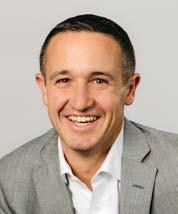

Rob Greenman, CFP® is chief growth officer at Vista Capital Partners. He is a CFP® holder and a past president of the local Financial Planning Association. Alex Canellopoulos, CFA, CFP® is director of investments at Vista Capital Partners, where he conducts market and performance-related research, stays on top of market trends and academic studies, and simplifies portfolio construction while enhancing the investment experience for clients. Founded in 2001 in Portland, Oregon, Vista offers wealth management services to clients with $2 million or more to invest, including investment management, financial planning, and legacy planning. To learn more, visit www.vistacp.com.
*For illustration purposes only.

Like this article?
Learn more at the OSCPA Financial & Retirement Planning Conference on November 6.
Register: www.orcpa.org/conferences
Questions? Contact Professional Development at 503-641-7200 / 800-255-1470, ext. 3; profdev@orcpa.org
QM is approaching faster than you think — get ready
by Jennifer Gum, CPA-NC

Firms that offer audit and accounting services still have time to successfully implement the new quality management standards, but they should start now to be ready when the standards take effect December 15, 2025.
You may be feeling overwhelmed and unsure of where to begin and how to bridge the gaps from the current policybased quality control standards to the new risk-based quality management standards. As shown in the “Quality Management Standards Implementation Timeline,” below, there is a lot to do and limited time to do it.
QUALITY MANAGEMENT
quality management standards will be iterative and may require reevaluating the risk assessment, gap analysis, and responses.
Determining a documentation approach
The form, content, and extent of documentation may be influenced by the complexity of the firm and the nature and circumstances of its practice areas and organization. Documentation of the firm’s system of quality management should:
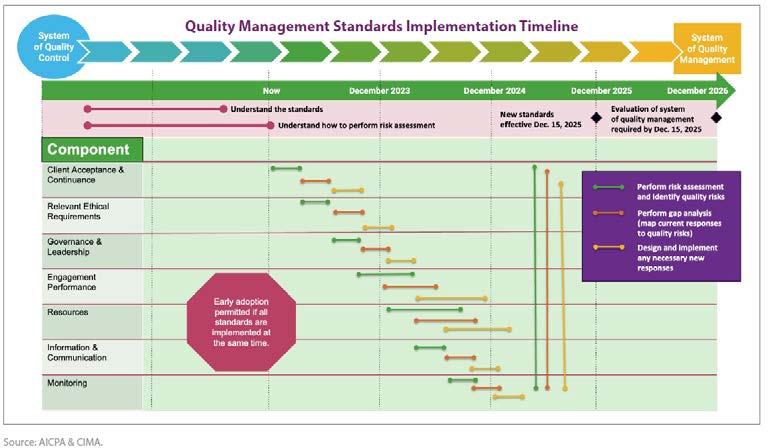
So, how do you make this significant task achievable? This article provides advice on how to do that in several key areas.
Developing an approach to implementation
There is no one correct answer in developing an approach to implementation. Some practical approaches include:
Component-by-component — Start with a component that your firm feels is already well established and develop the quality objectives, quality risks, and responses for that component before moving on to another component.
Step-by-step — Develop all quality objectives first, assessing all quality risks, and then design and implement responses to quality risks.
Caution: One response could address multiple quality risks across various components, and one quality risk could require more than one response. Implementation of the
• Support a consistent understanding of the system of quality management by personnel, including their roles and responsibilities when performing engagements.
• Support consistent implementation and operation of the responses.
• Provide evidence of the response’s design, implementation, and operation to support the system of quality management by the responsible individual(s).
The AICPA developed a template that firms may use to facilitate the documentation of quality objectives, quality risks, and responses during the implementation of the quality management standards as part of the practice aid Establishing and Maintaining a System of Quality Management for a CPA Firm’s Accounting and Auditing Practice.
The risk assessment process
The risk assessment process is a new component firms will design and implement as part of their system of quality management. It consists of establishing quality objectives, identifying and assessing quality risks that could adversely affect achieving quality objectives, and designing and implementing responses to address the assessed quality risks.
Establishing quality objectives
Statement on Quality Management Standards (SQMS) No. 1, A Firm’s System of Quality Management specifies quality objectives that the firm should establish. Quality objectives are the desired outcomes in relation to the components of the system of quality management to be achieved by the
QUALITY MANAGEMENT
firm. Firms should establish specified quality objectives for:
• Governance and leadership;
• Relevant ethical requirements;
• Acceptance and continuance of client relationships and specific engagements;
• Engagement performance;
• Resources; and
• Information and communication.
The quality objectives required to be established by the firm are considered sufficiently comprehensive such that it is unlikely that the firm would need to establish additional quality objectives. A firm may establish sub-objectives to enhance the firm’s identification and assessment of risks and responses.
What is a quality risk?
A quality risk is a risk that has a reasonable possibility of
• Occurring, and
• Individually, or in combination with other risks, adversely affecting the achievement of one or more quality objectives.
Quality risks should be specific to your firm; therefore, obtaining an understanding of the conditions, events, circumstances, actions, or inactions that may adversely affect the achievement of the quality objectives is imperative.
Consider a firm brainstorming session to kick-start the documentation of identified risks. Write down what your firm does and what could go wrong in the absence of controls. If your firm is a small practice with less complex clients, don’t assume you don’t have any risks. Think about the procedures you perform during client acceptance and continuance to mitigate client risk, how you stay up to date with professional standards, how you shield yourself from selfreview threat, and how you exercise professional skepticism.
Designing and implementing responses
The nature, timing, and extent of responses should be based on the reasons for the assessments given to the quality risks.
Your firm’s current quality control policies and procedures are a good place to start when designing and implementing responses.
Based on the identified quality risks, map your current controls, or as SQMS No. 1 calls them, “responses to quality risks.” Modify the policies and procedures as necessary to appropriately respond to the identified quality risks.
Perform a gap analysis to identify quality risks without appropriate responses and responses without corresponding quality risks. Then, evaluate whether all quality objectives are appropriately addressed and determine whether all specified responses from paragraph 35 in SQMS No. 1 have been included. Based on the gap analysis, create new policies or procedures to address quality risks, as needed, and consider eliminating any policies or procedures that are not effective.
Tips, traps, and insights by component
Most of the necessary components are not new to your firm’s system of quality control, but when your firm transitions to a system of quality management, you will need to consider new and more robust requirements during implementation.
Governance and leadership
The governance and leadership component, commonly referred to as the “tone at the top,” is not a new element of firm quality control, but the new quality management standards have more robust requirements. There is a focus on the firm’s environment and culture that support quality, including an expectation that leadership will demonstrate a commitment to quality and that the firm will deploy resources consistent with its commitment to quality. Engage with your firm’s staff and discuss the following:
• How does your firm assign individuals to engagement teams?
• Does your firm have a tracking mechanism to ensure personnel, including partners, have the competence and capacity, including time, to complete their assigned roles?
• When making strategic decisions, how does the firm account for audit and accounting quality?
• Does your firm clearly inform all personnel of their responsibilities to the system of quality management?
Relevant ethical requirements
Under this updated component, the firm is required to specify an individual who is responsible for ensuring compliance with independence requirements. This individual
will need the right knowledge, skill, ability, capacity, and authority to address these issues — not just be a senior person in the firm. Joe Lynch, CPA, managing director at Johnson Global Accountancy and AICPA Quality Management Implementation Task Force member, suggests firms consider these questions as they explore how to adapt current processes:
• How is your firm dealing with relevant ethical requirements now, and will you need to make changes to comply with the quality management standards?
• Do you have a system in place for personnel to report any violations?
• Do you have someone in your organization who is an expert on applicable independence and ethics rules and can take on this role?
• Should there be two separate roles in the quality management function, one for the creation of the policies and procedures and the other for monitoring the compliance of those policies and procedures?
• How is your firm determining the existence and completeness of firm relationships (e.g., with vendors)?
Acceptance and continuance of clients and specific engagements
We’ve heard firms say that they don’t have any risks because their client base is not risky. Let’s turn this comment into a question: Why do you think your clients are not risky? Some potential answers to this question could be that your firm only accepts clients in an industry it has the competence to specialize in, your clients’ organizational structures or business models are not complex, or your clients have good business reputations and ethical values. These are all examples of acceptance and continuance criteria to include in your firm’s policies and procedures. Some other questions to consider include:
• Is your firm’s approval over acceptance and continuance aligned with risk assessment and tone at the top?
• What could have changed at the client from previous acceptance or continuance decisions to next year’s decisions (which could be harder to know during economic turbulence)?
• What if information becomes known after your firm’s acceptance decision has been made that could’ve impacted that decision if it had been known at the time? What kind of information would that be?
Engagement performance
This may be a good component to start with since your firm likely has a good understanding of the engagement performance component’s objectives. Take stock of your current engagement performance policies and procedures and evaluate what is or is not working for your firm. There are several new or enhanced requirements that can help tailor your policies and procedures. For example, there’s a new requirement that engagement teams understand and fulfill their professional responsibilities, including an engagement partner’s overall responsibility for managing and achieving quality and being sufficiently and appropriately involved throughout an engagement.
Increasing partner involvement throughout the engagement has proven to enhance audit quality. Consider how your firm can improve its current supervision and review policies to be clear, concise, and actionable.
Resources
The resources component in a firm’s system of quality management now includes requirements related to technological and intellectual resources, in addition to enhanced human resources requirements. Technological resources are essentially IT applications the firm uses to support the system of quality management and engagement performance. Depending on the complexity of the firm, the processes could be relatively simple and focus on authorizing access and processing updates to the IT application. In more complex firms, the processes could cover multiple IT resources and programming considerations. Intellectual resources include a firm’s methodologies, accounting guides, and written policies or procedures.
Here are some questions to assess whether the firm meets the resources objectives:
• How does your firm evaluate personnel performance? Does it include recognition for positive actions or behaviors?
• Does your firm require the use of certain software applications in performing engagements? How does your firm archive engagement files?
• How does your firm train personnel in the use of intellectual or technological resources?
QUALITY MANAGEMENT
• Does your firm have policies and procedures for organizing engagement files (e.g., a numbering convention)?
• Does your firm use a service provider to support the applications?
Information and communication
The information and communication component are new under the quality management standards, but your firm likely has communication procedures in place. You may also find you have policies and procedures in other components that could be responsive to risks in this component. For example, as part of relevant ethical requirements, your firm should have a policy or procedure describing how your firm’s system of quality management is documented and communicated throughout the firm.
To develop quality risks and responses related to information and communication, consider the following questions:
• How is information shared within the firm?
• If your firm has a website, who is responsible for the information conveyed and how frequently is it updated?
• How does your firm communicate information to

engagement teams so they understand and perform the engagement in compliance with applicable professional standards?
• How does your firm track required external communications?
• If you use resources from service providers, how do you communicate each other’s responsibilities? For example, how often does your firm receive updated quality control materials?
The monitoring and remediation process
The operation of the responses and monitoring activities is required to be implemented by December 15, 2025. Firms then have another year to perform the evaluation of the system of quality management.
There is expanded and enhanced guidance throughout this component; key changes include a focus on monitoring the entire system of quality management, a new framework for evaluating findings, identifying deficiencies and evaluating identified deficiencies, and more robust remediation.
Monitoring activities for the monitoring and remediation
Make Year-End More Efficient
Are your business clients scrambling to take care of year-end responsibilities, while also managing their day-to-day HR administration tasks?
Paychex can provide support and expertise to assist with year-end responsibilities and more. We can help your clients:
• Stay compliant with year-end payroll and HR reporting like Beneficial Ownership Information (BOI), S-Corporation payroll, Affordable Care Act (ACA), taxable adjustments, and W-2 preparation and filing.
• Help increase applicant flow and resume tracking using recruiting technology
• Improve employee productivity using HR technology for employee development, tracking time and attendance, and streamlining communication of HR plans.
Paychex is proud to be the preferred provider of payroll services for the OSCPA
process may differ in firms of different complexity. For example, a sole practitioner’s monitoring activities may be simpler because the practitioner interacts with the system of quality management frequently and information may be more readily available.
Tip: A new requirement in SQMS No. 1 is for a firm leader to evaluate, at least annually, whether the system of quality management provides reasonable assurance that the objectives of the system of quality management are being met. The effective date for this evaluation is within one year of December 15, 2025.
Firm leadership is required to make this evaluation even in a peer review year. It is comparable to management’s assertion about its system of internal control over financial reporting (ICFR), which remains management’s responsibility regardless of whether an audit of an entity’s system of ICFR is performed.
Don’t go it alone; we have resources
If your firm hasn’t started the transition from a system of quality control to a system of quality management, now is the time to start. Implementation of these new standards is required by December 15, 2025, which is fast approaching.
Resources and information to support quality management implementation are available at aicpa-cima.com/auditqm. There you’ll find:
• Free interactive practice aid with an accompanying example risk assessment template tool to help you implement SQMS No. 1;
• Crosswalk document mapping the current system of quality control to the new system of quality management;
• Quality management standards and related guidance; and
• Checklist for firms and more
How to keep implementation of the quality management standards on track
Every firm that performs engagements in accordance with the Statements on Auditing Standards (SASs), Statements on Standards for Accounting and Review Services (SSARSs), and Statements on Standards for Attestation Engagements (SSAEs) should have some understanding of the new quality management standards. To keep implementation on track:
• Condense the timeline (see the chart “Quality Management Standards Implementation Timeline”) and prioritize your firm’s efforts.
• Schedule time to actually read the standards.
• Add a reoccurring meeting to your calendar and invite others in your firm to participate.
• Consider attending webinars or perusing industry publications to learn from other firms and hear different perspectives on how firms are implementing the new requirements.
• Engage in conversations internally and externally.
Overview of the new standards
The new standards will apply to all firms that conduct any audits, attest examinations, financial statement or attest reviews, compilations, or agreed-upon-procedures engagements. Here’s a rundown of the new standards with a brief description of each:
• Statement on Quality Management Standards (SQMS) No. 1, A Firm’s System of Quality Management, introduces a new risk-based assessment process and requires firms to design, implement, and operate a system of quality management customized to their practice and engagements. This includes establishing quality objectives, assessing the specific risks to quality, and designing and implementing responses to address those risks. In addition, firm leadership is required to evaluate annually whether the firm’s system of quality management is meeting its objectives. The approach calls for continuous improvement and ongoing remediation over time. SQMS No. 1 supersedes Statement on Quality Control Standards No. 8, A Firm’s System of Quality Control.
• SQMS No. 2, Engagement Quality Reviews, applies when a firm decides that an engagement quality (EQ) review is an applicable response to address its engagement performance quality management objective. This new standard addresses the appointment and eligibility of the EQ reviewer (whether inside or outside of the firm) and performance of the EQ reviews.
• SQMS No. 3, Amendments to QM Sections 10, A Firm’s System of Quality Management, and 20, Engagement Quality Reviews:
◦ Amends QM sections 10 and 20 to conform certain terms to language used in SAS No. 149, Special Considerations — Audits of Group Financial Statements (Including the Work of Component Auditors and Audits of Referred-to Auditors).
◦ Provides guidance on differentiating between a resource and an information source.
QUALITY MANAGEMENT
◦ SQMS No. 3 is effective concurrently with the effective dates provided in QM sections 10 and 20.
• Statement on Auditing Standards (SAS) No. 146, Quality Management for an Engagement Conducted in Accordance with Generally Accepted Auditing Standards, focuses on quality management for audits at the engagement level, including the engagement partner’s responsibility for managing engagements to achieve quality, and the importance of quality to all members of the engagement team.
• Statement on Standards for Accounting and Review Services (SSARS) No. 26, Quality Management for an Engagement Conducted in Accordance with Statements on Standards for Accounting and Review Services, amends the SSARSs to conform with SQMS Nos. 1 and 2.
Other significant changes include two new components of systems of quality management (the risk assessment process and the information and communication component), more robust requirements for leadership and governance, enhanced monitoring and remediation processes, and new requirements for networks and service providers.
This article originally appeared in the November 2023 Journal of Accountancy, www.bit.ly/qmaicpa.
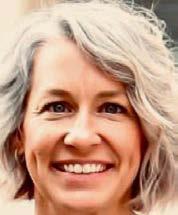
Jennifer Gum, CPA-NC, is a manager — Audit Quality for AICPA & CIMA, together as the Association of International Certified Professional Accountants. To comment on this article or to suggest an idea for another article, contact Jeff Drew at Jeff.Drew@aicpa-cima.com.
Explore related CPE
Surgent’s Compilations, Reviews, and Preparations: Engagement Performance and Annual Update
• November 9, 2024 - Webcast - #V43539
Member Fee: $299 / Nonmember Fee: $374
CPE: 8 / Level: 4 (Update)
Producer: Surgent Professional Education
Setting a New Standard for Quality: Practical Guidance to Implement the AICPA’s New Quality Management Standards (1 hour)
• November 14, 2024 - Webcast - #V47996
Member Fee: $39 / Nonmember Fee: $59
CPE: 1 / Level: 4 (Update)
Producer: ACPEN
Annual Update for Accountants and Auditors
• November 21, 2024 - Webcast Replay - #W80601
Member Fee: $310 / Nonmember Fee: $385
CPE: 8 / Level: 4 (Update)
Producer: Galasso Learning Solutions LLC
Register: www.orcpa.org/cpe and enter the event number
2025-26 scholarship application period opens November 4, 2024
The OSCPA Educational Foundation has two scholarship programs offering merit-based scholarships. Applications for 2025-26 open November 4, 2024; deadline is January 13, 2025.
For more information, visit www.orcpa.org/scholarships.
Help your client’s windfall be part of their legacy.

Whether expected or out of the blue, wealth events mean new possibilities and pitfalls for your clients. As Oregon’s largest charitable organization, with decades of expertise, OCF is here to help you and your clients create a philanthropic resource while navigating the financial and legal consequences of sudden wealth. Click here to download your client-facing Wealth Event PDF.

Board of Directors Spotlight Harriet Strothers Delap LLP
We had the privilege of speaking with members of the OSCPA Board of Directors, gaining insights into their leadership journeys and messages to members.
View the 2025-26 candidates for the OSCPA Board of Directors on page 36.
What do you enjoy about serving on the Board?
Serving on the Board is an amazing opportunity to both give back to our profession and to meet and learn from some of the smartest CPAs in the state. This is my 2nd time on the OSCPA Board, and I love being surrounded by others who value the profession and the credential!
What is the most important message OSCPA leaders can share with colleagues?
Being a CPA can be an incredibly rewarding career both personally and financially. It is hard work to continue to learn year after year as the rules change, but if you keep an open mind and think outside of the box, you will have the chance to evolve personally and professionally. Our profession is so different from when I began. I was lucky enough to experience the change from pencils and 12 column paper to AI. It has been a crazy fun ride!
What was your first job and what did you learn from it?
If you don’t count babysitting, which taught me that education was out, I was a swim and ski instructor. I learned that there is no one way that people learn. All CPAs are teachers, and we need to help grow our teams by adapting our teaching style to the individual and remaining open and receptive to trying new methods and processes.
What would you consider a perfect day?
I live by the beach so a perfect day would be helping a client win, either in an audit or tax planning situation, followed by a walk to the beach with my husband, dogs, and a glass of Oregon wine.

Jonathan Grover
City of Hillsboro
What made you want to serve on the Board?
Sherri made me do it. Kidding. Real answer: I accepted the committee’s nomination, as OSCPA is the most critical advocate in the state of Oregon to promote and protect the value of the CPA designation and equip CPAs to excel in their career path. Supporting this mission is what inspires me to serve. Also, having the chance to represent the CPAs serving in local government is a responsibility I proudly carry as I contribute to discussions and decision-making on the Board.
What is the most important message OSCPA leaders can share with colleagues?
The OSCPA will serve as your career-long partner, and resource you wherever your path leads. CPAs can use their license in many different and exciting ways, and the OSCPA is equipped to help you succeed in specific niches and industries. The OSCPA is proactive in evolving at the same pace as the industry.
What was your first job and what did you learn from it?
My first job was a one-day assignment at Nordstrom doing, ironically, inventory. I didn’t realize it would be related to my future career until years later. From that, I learned not to discount any gained experience as irrelevant. You never know how the skills and abilities developed will be used in the future.
What was the last book/series/podcast you enjoyed?
I recently listened to Breaking Free from Broke by George Kamel. I’m a personal finance junkie and enjoyed this recent book from the Ramsey Solutions collection.
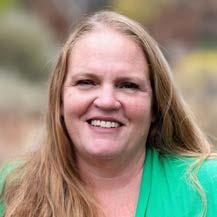
Yvonne Zbranak
Silverline LLP
What do
you enjoy
about serving on the Board?
I enjoy meeting people from all over Oregon, of all different backgrounds, who share the common interest of wanting to make a difference within the profession of accounting.
What is the most important message OSCPA leaders can share with colleagues?
Engagement with others in your field is extremely important.
What was your first job and what did you learn from it?
My first job was working for my mom (past OSCPA Board member Lynne Angland) in her accounting business. I had to switch out the pages in the CCH research library when they came in each month (I am definitely dating myself). In the moment I learned about the importance of accuracy and attention to your work. Now, as I am thinking about it, it is proof that the accounting profession has always changed frequently.
What would you consider a perfect day?
Enjoying all the Pacific Northwest has to offer with my two children.
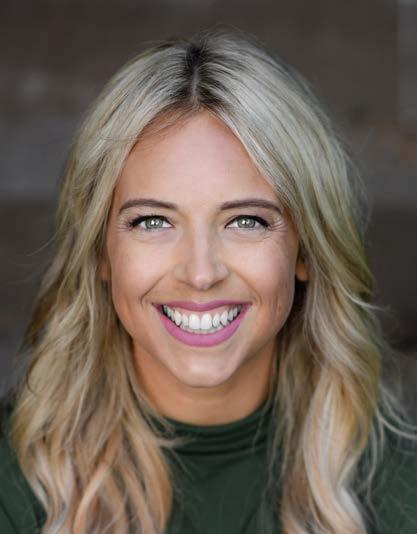
Morning routine
5:00 a.m. - 7:00 a.m.
My day starts early with a morning workout alongside my husband of 13 years. This time is crucial for me to clear my mind and prepare for the day ahead. We end our workout with a 20-minute sauna session — I feel grateful that I get to surround myself with Patrick Lumber wood in such a peaceful and intentional way. After the sauna, I check in with my 89-year-old grandmother, who lives with us. Then it’s all about getting our three kids — Henry (11), Charlotte (9), and Calvin (7) — ready for the day. With all three active in sports, mornings are a mix of packing lunches, organizing gear, and ensuring everyone is out the door on time.
Commute to our headquarters in Philomath, OR 7:00 a.m. - 9:00 a.m.
Today is our monthly Trader Meeting, so I have a 2-hour drive to Patrick Lumber Manufacturing (PLM) in Philomath, our headquarters, where I have a series of monthly meetings.
My husband makes me an Americano with honey to-go and I listen to my podcasts which are a mix of The Daily, The Journal, or Lumber Slingers (a podcast my colleague and I record weekly) to stay informed on the latest news. I also use the time to make calls during the drive. This time helps me mentally organize my priorities for the day.
A day in my life:
Natalie
Heacock,
CPA
President & CFO of Patrick Lumber Company
Meeting with the CEO
9:00 a.m. - 10:00 a.m.
Once I arrive at the mill, I start the day with a one-on-one meeting with our CEO. This is a crucial time to discuss the company’s overall strategy, address any pressing issues, and ensure we’re aligned as we lead the team forward.
Trader Meeting
10:00 a.m. - 11:30 a.m.
After meeting with the CEO, I attend the Trader Meeting. This is a vital opportunity for the sales team to connect with each other and leadership. Each Trader discusses their markets, current trends, and any challenges they are facing. Today, we’re welcoming a new trader to the team. It’s exciting to hear about the business he’s bringing with him and to explore how his experience will contribute to our growth.
Urgent issue - inventory system down 11:30 a.m. - 12:00 p.m.
Just as the Sales Meeting wraps up, I receive an urgent call from Operations. The inventory system is down at one of our partner mills, potentially causing significant delays. I coordinate with our Operations Manager, and ensure a plan is in place to get the system back online as soon as possible. Communication is key here, so I’m in constant contact with both our team and the partner mill to manage the situation.
Lunch and networking
12:00 p.m. - 1:00 p.m.
With the immediate crisis managed, I grab a quick lunch and take the opportunity to catch up with key team members. We often invite industry contacts to join us for a catered lunch after these meetings, and today we’re hosting guests from a local non-profit who are interested in learning more about our business. This informal setting is a great way to discuss the state of the industry and build relationships that are essential to our growth.
Capital Budget Meeting
1:00 p.m. - 2:00 p.m.
After lunch, I dive into a capital budget meeting. I lead the discussion on how we’re allocating resources to support our long-term growth and innovation. We are currently building a new hardwood sawmill which takes a lot of time and resources, but I am happy with the results of this meeting as we are on budget and on time with the project.
Leads Meeting
2:00 p.m. - 3:00 p.m.
In the late afternoon, I attend the Leads Meeting, where I meet with mill management and all the manufacturing center leads. This is a valuable opportunity for them to connect directly with leadership, share updates, and discuss any pressing issues or successes. These meetings are crucial for fostering strong relationships and ensuring open communication across all levels of the company.


Drive back to the office
3:00 p.m. - 5:00 p.m.
After wrapping up at PLM, I make the 2-hour drive back. During the drive, I stay connected, making calls or reflecting on the day’s discussions, while also keeping an eye on the resolution of the inventory system issue.
Wrapping up the day
5:00 p.m. - 6:00 p.m.
Once I’m back, I take some time to wrap up any lingering work tasks, respond to emails, and plan for the next day. I also check in with Operations to ensure the inventory system issue has been fully resolved.
Family time and soccer practices
6:00 p.m. - 8:00 p.m.
After a full day of meetings, travel, and problem-solving, I focus on family time. Whether it’s attending one of the kids’ soccer practices or enjoying dinner together with my grandmother, these moments keep me grounded and motivated. I also use this time to plan for the next day –lunches, timing, and kids’ rides.
Final reflections
8:00 p.m. - 9:00 p.m.
In the evening, I like to unwind with a book—I am currently reading 5 Temptations of a CEO by Patrick Lencioni. I usually listen to books on Audible and also have a hard copy handy so I can adapt to the situation I am in, otherwise I might never finish a book! It’s a peaceful way to wrap up the day before heading to bed, often with my dog curled up nearby.
OSCPA Group Health Program for Affiliate Firm Members
Third Consecutive Year of Below Market Increases
The OSCPA Group Health Trust Board of Trustees is excited to share information about the 2025 Medical, Dental, Vision, and Long-Term Disability plans. We are continuing our partnerships with Providence Health Plans, Delta Dental of Oregon, and The Hartford for plans offered through the Group Health Trust.
Healthcare trends are at their highest point in well over a decade. Contributing factors include unit cost inflation at the provider level, along with increased utilization of specialty and high-cost brand-name drugs.
Highlights of 2025 plans
Medical/Rx – Providence Health Plan
• Choice of six medical plans, including two HSA eligible plans
• Access to Providence’s broadest network in the state (unavailable in the small group market)
• Further cost savings available through additional network options
• Custom pricing and potential discounts available for firms with 20+ eligible employees
Dental – Delta Dental of Oregon
• Access to the largest dental insurance carrier in Oregon
• Three plans available, including one plan covering orthodontia and one voluntary plan
• Firms can elect Dental without offering Medical insurance
Because of this, for the second year in a row, several insurance companies in the small group market have filed double-digit rate increases. The compounding effect of these increases is creating challenges for businesses throughout Oregon.
Fortunately, the Group Health Trust is pleased to report that our Medical/Rx rate increase will be in single digits for the third consecutive year! These positive results should make the Group Health Trust a competitive option for most CPA firms across the state.
Vision – Providence Health Plans
• Access to VSP network through Providence, the largest vision network in the country
• One plan available, with exams and lenses covered every year
• Available to firms electing Medical insurance through Providence
Long-Term Disability – The Hartford
• 50% or 60% income replacement plans available
• Composite rating, regardless of employee age
• Substantially reduced rates vs. direct market
A message from the Board of Trustees of the OSCPA Group
Health Trust

The OSCPA Group Health Trust Board of Trustees is pleased to announce competitive plans and rates for our member firms. We encourage you to reach out to our broker The Partners Group at 503-726-5755 or oscpahealthplan@tpgrp. com to see if OSCPA Group Health Program plans are a good fit for your firm.
Help build the CPA pipeline
Annually the Foundation strives to increase the number of scholarships offered to college students.
Your contributions are a vital part of ensuring enough accounting professionals for the future. By contributing to the Foundation you help students achieve their educational goals and secure a pipeline of qualified future CPA candidates in Oregon.
Your personal contribution
Your personal contribution of any size benefits tomorrow’s CPAs with scholarships awarded to high-achieving Oregon students. Show your commitment to the future of the CPA profession by making a contribution today.
Personal contribution levels
• Champion – $2,500+
• Platinum – $1,000 - $2,499
• Gold – $500 - $999
• Silver – $250 - $499
• Bronze – $100 - $249
Corporate Giving
Brand your business as a leader in the CPA profession and gain year-long exposure to students and professionals.
Corporate donor levels
• Champion – $7,500+
• Platinum – $5,000 - $7,499
• Gold – $2,500 - $4,999
• Silver – $1,000 - $2,499
• Bronze – $500 - $999
www.orcpa.org/contribute-scholarships
Endowment Funds
Endowments help secure the Foundation’s future, and they are a great option for those who wish to support the profession through planned giving.
Contributions can be directed to an established endowment fund at any time, or new endowment funds may be established (minimum $50,000).
Planned Giving is a Planned Future
Consider one or more of these options:
• Endowment Funds
• Retirement Funds
• Estates
• Real Estate
• Life Insurance
• Gift Annuities
• Charitable Trusts www.orcpa.org/planned-giving

Corporate Transparency Act/Beneficial Ownership Information Reporting — Risk management considerations for CPA Firms
Provided by CAMICO
The new beneficial ownership reporting requirements under the Corporate Transparency Act (“CTA”) took effect January 1, 2024, and months later, the small business community remains woefully unprepared for compliance with this complex reporting regime. As these compliance challenges pose potential risks to accounting professionals seeking to offer CTA-related services, the focus of this article is on the risk management considerations for CPA firms to mitigate potential liability exposure.
Background
The CTA was enacted January 1, 2021, as part of the National Defense Authorization Act, representing the most significant reformation of the Bank Secrecy Act and related anti–money laundering rules since the U.S. Patriot Act. The CTA is intended to address and guard against money laundering, terrorism financing, and other forms of illegal financing by mandating certain entities (primarily small and medium-sized businesses) to report “beneficial owner” information to the Financial Crimes Enforcement Network (“FinCEN”).
The CTA authorizes FinCEN, a bureau of the U.S. Treasury Department, to collect, protect, and disclose this information to authorized governmental authorities and to financial institutions in certain circumstances.
This article is intended to provide a high-level overview of some of the key CTA provisions and address significant issues, critical unknowns, and potential risks facing accounting firms.
What entities are subject to the new CTA reporting requirements?
Entities required to comply with the CTA (“Reporting Companies”) include corporations, limited liability companies (LLCs), and other types of companies created by a filing with a Secretary of State (“SOS”) or equivalent official. The CTA also applies to non-U.S. companies registered to do business in the U.S. through a filing with a SOS or equivalent official. Since the definition of a domestic entity under the CTA is extremely broad, additional entity types could be subject to CTA reporting requirements based on individual state law formation practices.
There are a number of exceptions to who is required to file under the CTA. Many of the exceptions are entities already
regulated by federal or state governments and as such already disclose their beneficial ownership information to governmental authorities.
Another notable exception is for “large operating companies” defined as companies that meet all of the following requirements:
• Employ at least 20 full-time employees in the U.S.
• Gross revenue (or sales) over $5 million on the prior year’s tax return
• An operating presence at a physical office in the U.S.
As currently promulgated, the CTA has an exemption for “any public accounting firm” registered in accordance with Section 102 of the Sarbanes-Oxley Act of 2002 (firms registered with the Public Company Accounting Oversight Board). However, other public accounting firms could be deemed Reporting Companies subject to compliance with the CTA.
Who is considered a “beneficial owner” of a Reporting Company?
A beneficial owner is any individual who, directly or indirectly, exercises “substantial control” or owns or controls at least 25% of a reporting company’s ownership interests.
An individual exercises “substantial control” if the individual (i) serves as a senior officer of the company; (ii) has authority over the appointment or removal of any senior officer or a majority of the board; or (iii) directs, determines, or has substantial influence over important decisions made by the Reporting Company. Thus, senior officers and other individuals with control over the company are beneficial owners under the CTA, even if they have no equity interest in the company.
In addition, individuals may exercise control directly or indirectly, through board representation, ownership, rights associated with financing arrangements, or control over intermediary entities that separately or collectively exercise substantial control.
CTA regulations provide a much more expansive definition of “substantial control” than in the traditional tax sense, so many companies may need to seek legal guidance to ultimately determine who are deemed beneficial owners within their organization.
CORPORATE TRANSPARENCY
Reporting deadlines
As currently promulgated, the CTA’s reporting deadlines are as follows:
• All new Reporting Companies — those formed (or, in the case of non-U.S. companies, registered) on or after January 1, 2024, and before January 1, 2025 — must file their initial BOI report within 90 days after their formation or registration.
• All existing Reporting Companies — those formed or registered before January 1, 2024 — must file their initial BOI report no later than January 1, 2025.
• Updated BOI reports are due within 30 calendar days after a change occurs.
• Corrected BOI reports are due within 30 calendar days after the Reporting Company becomes aware of, or has reason to know of, an inaccuracy.
Refer to FinCEN’s Frequently Asked Questions document (www.fincen.gov/boi-faqs) or to the FinCEN Reference Materials (www.fincen.gov/boi/Reference-materials) for detailed information and updated guidance regarding deadline changes that may be promulgated.
Penalties for noncompliance
Penalties for willfully violating CTA reporting requirements include (1) civil penalties of up to $591 per day that a violation is not remedied, (2) a criminal fine of up to $10,000, and/or (3) imprisonment of up to two years. A safe harbor from the penalty is available to Reporting Companies that file corrected reports with FinCEN no later than 90 days after submission of an inaccurate report (31 U.S.C. 5336(h)(3)(C)).
Considerations for entities as they begin to prepare for the CTA
With the CTA introducing a new and expansive reporting regime, now is the time for entities to assess the new rules’ implications on their organizations. As entities begin this evaluation, the following, although not meant to be allinclusive, should be considered:
• Is the entity subject to the CTA or does it qualify for exemptions?
• If the company is not exempt, how should it calculate percentages of “ownership interests” to determine whether any owners meet the 25%-ownership threshold?
In many companies with simple capital structures, the answer will be obvious. It may be much less obvious, however, for companies with complicated capital structures (given the expansive definition of “ownership interest”), or companies in which some ownership interests are held indirectly — for example, through uppertier investment entities, holding companies, or trusts.
• How should a company begin to assess and determine each person who exercises “substantial control” over it? There may well be multiple people who qualify, given the expansiveness (and vagueness) of the “substantial control” definition.
• What new processes and procedures should a company put in place to monitor future changes in its beneficial owners and reportable changes on existing beneficial owners that will require timely updated reports to FinCEN? Note that the types of information that must be provided to FinCEN (and kept current) for these beneficial owners include the owner’s legal name, residential address, date of birth, and unique identifier numbers from a nonexpired passport, driver’s license, or state identification card (including an image of the unique-identifier documentation).
• Caution: Keeping current with the information that needs to be provided to FinCEN will be a significant trap for Reporting Companies, as they will need to rely on beneficial owners to timely update them on reportable changes to their information (e.g., ownership changes, moves, marriages, divorces, etc.). Reporting Companies must file updated or corrected reports within 30 days of reportable changes or discovery of inaccurate information in previously filed reports. As a result, a company’s operative documents may need to be revised to include provisions related to the CTA such as representations, covenants, indemnifications, and consent clauses. For example, the operating agreement may require:
◦ A representation by each shareholder, member or partner, as applicable, that it will be in compliance with or exempt from the CTA;
◦ A covenant by each shareholder, member or partner, as applicable, requiring continued compliance with and disclosure under the CTA or to provide evidence of exemption from its requirements;
◦ An indemnification by each shareholder, member or partner, as applicable, to the company and its other
shareholders, members or partners, as applicable, for its failure to comply with the CTA or for providing false information; and
◦ A consent by each disclosing party for the company to disclose identifying information to FinCEN, to the extent required by law.
Potential risks to the CPA of helping clients prepare for the CTA
There has been much discussion and debate within the accounting community about whether CPAs are in a position to provide guidance and advice to their clients regarding whether an exemption applies or to ascertain whether legal relationships constitute beneficial ownership. The overarching concern is that CPAs and non-attorney tax professionals providing assistance to clients in this arena could be deemed engaging in the unauthorized practice of law (“UPL”). As each state has its own definitions of what services are considered UPL, this is an area of some risk to the accounting profession.
As of the date of this writing, very few states have commented on the issue as to whether CPAs providing advice to clients regarding the CTA would, or would not, be viewed as UPL. Most recently, on July 9, 2024, the New Jersey (“NJ”) Supreme Court Committee on the Unauthorized Practice of Law (“Committee”), issued an Opinion Letter on the unauthorized practice of law concern specific to NJ CPAs filing “beneficial owner information” reports (BOI Reports) under the Corporate Transparency Act. An excerpt from the Opinion Letter stated:
“With regard to beneficial owner information reports under the Corporate Transparency Act, the Committee finds that the public needs protection, given the complexity of some matters and the significant civil and criminal penalties for noncompliance with the Act. Complex filings require a lawyer’s judgment, training, and expertise - the analysis may be tricky and the risk of penalties, if the analysis is faulty, is greater. While the public needs protection in complex matters, however, most filings will be straightforward. For example, all matters where there is a single owner of a limited liability company will be simple - that single owner is the beneficial owner of the entity for purposes of the Act. In such cases, one does not need to be a lawyer to determine the necessary information to include in a beneficial owner information report.”
The Committee further noted that given that most filings are likely to be straightforward cases, they found that a licensed CPA can engage in providing services for such straightforward cases provided the CPA notifies the client that it may be advisable to consult with a lawyer. The Opinion Letter made it clear that the Committee relies on the professionalism of CPAs to ensure that such licensees will recognize when a filing is more complex, and it is in the client’s interests for a lawyer to be retained in the matter. Refer to the full Opinion Letter of the New Jersey Supreme Court Committee at: www.njcpa.org/docs/default-source/ stay-informed/advocacy/01-2024-cpa-inquiry-response.pdf. Although this Opinion Letter is specific to New Jersey, absent any other state-specific rulings/opinions on the UPL concern that may further narrow the scope and limits of CPAs filing BOI reports, CAMICO believes it may be prudent for firms to reference the promulgated guidance set forth in the NJ Opinion Letter as a guide when evaluating what, if any, CTA-related services a CPA firm may wish to provide to their clients.
There have also been legal challenges regarding the constitutionality of the CTA. On March 1, 2024, a decision was filed by the United States District Court for the Northern District of Alabama (NSBA v. Yellen) which declared the Corporate Transparency Act to be unconstitutional for the named Plaintiffs, the National Small Business Association (“NSBA”) and a small business owner who is a member of the NSBA. Refer to the following link to access the court’s filed document: www.s-corp.org/wp-content/ uploads/2024/03/051.-Memorandum-Opinion.pdf. Although this court ruling only applies to the named Plaintiffs, the Court’s declaratory judgment that the CTA is unconstitutional has created added confusion within the small business community. The U.S. Department of Justice (DOJ) has filed an appeal, and many organizations have urged FinCEN to suspend all enforcement actions until one year after the conclusion of all court cases related to NSBA v. Yellen and take no retroactive enforcement actions for non-compliance during this time. FinCEN, however, has made it clear that non-enforcement applies only to the plaintiffs in the NSBA v. Yellen case and all other entities deemed reporting companies under the guidance as promulgated must still comply with the CTA and are required to submit beneficial ownership and company applicant information to FinCEN. Note that FinCEN has clarified that this ruling applies only to NSBA members as of March 1, 2024, so an entity seeking to join the NSBA in hopes of shielding itself from CTA enforcement may not succeed.
From a risk management best practices perspective, CAMICO strongly encourages CPAs to tread carefully and stay current with the UPL related guidance in the state(s) in which you are licensed as well as the state(s) in which your clients reside. Assess your firm’s willingness, knowledge, expertise, and risk tolerance to take on CTA compliance work. The scope and limits of any CTA-related services you deem appropriate to perform should be well documented and consistent with the client’s understanding and expectations. When in doubt, advise clients to seek guidance from qualified legal counsel.
Risk management tips
• Familiarize yourself with the Corporate Transparency Act and the beneficial ownership reporting requirements and stay current with any further guidance promulgated by FinCEN.
For details on specific CTA provisions, refer to the Beneficial Ownership Information Reporting Rule, available at www.fincen.gov/boi.
For additional information regarding the CTA’s beneficial ownership reporting requirements, refer to FinCEN’s Frequently Asked Questions document at www.fincen.gov/boi-faqs.
• Tread carefully to reduce the likelihood of an accusation of practicing law without the appropriate license! Performing services for clients that are outside of the purview of your licensure or your competencies poses significant liability and insurance coverage risks.
• Document, document, document...
◦ Inform and advise your clients in writing regarding the new beneficial ownership reporting requirements under the CTA and your recommendation that they seek legal guidance. CAMICO offers a client notification template for this purpose, and you can download it here.
◦ Modify your traditional tax and financial statement engagement letters to include language that specifically disclaims the firm’s involvement in assisting clients with CTA compliance under the terms of that agreement, as any such CTA-related services that a firm deems appropriate to perform should be covered under a separate standalone CTA engagement letter.
See CAMICO’s suggested disclaimer language below: Starting in 2024, the Corporate Transparency Act (“CTA”) mandates certain entities (primarily small and medium-sized businesses) created in or registered to do business in the United States report information about their beneficial owners — the individuals who ultimately own or control a company — to the Financial Crimes Enforcement Network (“FinCEN”). Management is responsible for <Client>’s compliance with the CTA, if applicable to its business, and for ensuring that any required reporting of beneficial ownership information is timely filed with FinCEN as required by the CTA. Our firm’s services under the terms of this agreement do NOT include any advising or consulting related to your entity’s compliance with the CTA. <If you have any questions regarding <Client>’s compliance with the CTA, including but not limited to whether an exemption may apply to your organization or to ascertain whether relationships constitute beneficial ownership under CTA rules, we strongly encourage you to consult with qualified legal counsel experienced in this area. OR If you have any questions regarding <Client>’s compliance with the CTA, including but not limited to whether an exemption may apply to your organization or to ascertain whether relationships constitute beneficial ownership under CTA rules, please contact us. Any CTA-related services we agree to perform will be covered under a separate engagement letter.>
◦ Use standalone engagement letters if the firm is rendering CTA-related services to clients that specify the limited nature of the services the firm is providing (e.g., filing of the initial BOI report, filing of a corrected/updated BOI report) and contains appropriate disclaimer language for such limited services. CAMICO also recommends having the client provide written representations acknowledging that they are responsible for the accuracy and completeness of the information they provide for purposes of preparing of the BOI report, and they also acknowledge their understanding that you are NOT performing any legal services as part of this limited service and that they have been advised by the firm to seek legal counsel. CAMICO has developed engagement letter templates and sample client representation letters for this purpose. CAMICO policyholders can access these templates on CAMICO’s Members-Only Site’s Engagement Letter Resource Center.
• Prepare your own firm for compliance if you are deemed to be a reporting company under currently promulgated CTA guidance.
This article was provided by CAMICO, the OSCPA’s preferred provider of professional liability and employment practices liability insurance. CAMICO policyholders with questions regarding this communication or other risk management questions should contact Loss Prevention at lp@camico.com or call our advice hotline at 800.652.1772 and ask to speak with a Loss Prevention Specialist.
THE OSCPA GROUP HEALTH PROGRAM

EVEN MORE COMPETITIVE IN 2025!
• Third straight year of below-market rate increases
• Customized rating for larger firms
• Choice of six medical plans through Providence Health Plans, including two HSA-eligible plans
• Access to Providence’s broadest network (unavailable in the small group market)
• Further cost savings available through additional network options
• Competitively priced dental plans through Delta Dental of Oregon
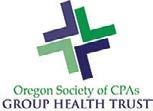
• Low-cost vision and long-term disability insurance is also available
To see if the OSCPA Group Health Trust is right for your firm, contact us. Receiving a proposal is simple and requires no commitment.
oscpahealthplan@tpgrp.com · (503) 726-5755 · thepartnersgroup.com
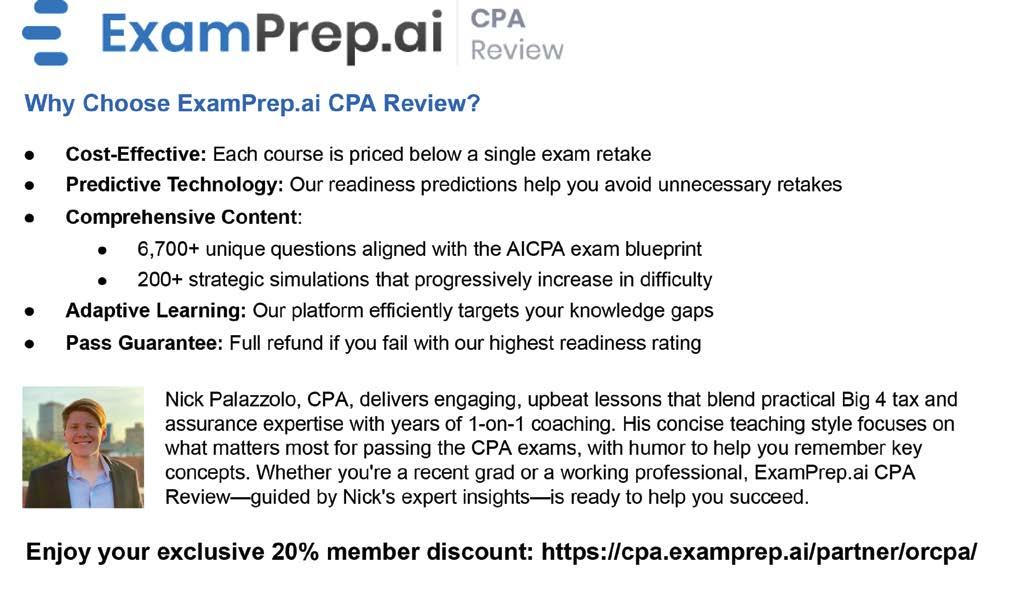
Announcing 2025-26 Candidates for OSCPA Board of Directors
In accordance with Article VII of the Society Bylaws, the OSCPA Nominations Committee recommends to the 2024-25 Board of Directors and Voting members the following slate of candidates to serve as OSCPA Officers and Directors for the 2025-26 fiscal year, commencing April 1, 2025.
2025-26 Board of Directors Officer Positions
Chair Gary A. Holcomb
Chair-Elect Adam R.K. Abplanalp Cobalt PC
*Vice Chair Megan S. Kurz Premier Community Supports LLC Grants Pass
Immediate Past Chair John D. Hawkins REDW LLC
Secretary/Treasurer
The offices of Secretary and Treasurer shall be appointed annually from the elective directors.
*Candidates for Three-Year Terms on Board of Directors 2025-28
Three-Year Terms Commencing April 1, 2025
Nominee (ratified by OSCPA Board of Directors.)
Jared A. Holum Perkins & Co.
Bradley G. Bingenheimer SingerLewak LLP
Christopher Dahlvig Linfield University
Board of Directors 2024-27
Three-Year Terms Continuing through March 31, 2027
Tricia S. Duncan Jones & Roth PC
Cameron Irtifa CPA Service LLC
Michael L. Lortz
Board of Directors 2023-26
Development Group LLC
Three-Year Terms Continuing through March 31, 2026
Jonathan D. Grover City of Hillsboro
Tiffany K. Nash
Kernutt Stokes LLP
RL Widmer III Moss Adams LLP
*Members’ Right to Submit Additional Candidates
Members have a comment period of 60 days, beginning on October 15 and ending December 15 to consider the list of proposed candidates, after which, if no additional nominations are received, the slate will be declared elected. If during the comment period a group of at least 10 Voting members petition the Society to nominate additional candidate(s) not on the proposed slate, a contested election would be held.
If you have questions regarding the nominations and elections process: Contact Sherri McPherson, IOM, CAE, President/CEO, at smcpherson@orcpa.org or 503-597-5480 / 800-255-1470, ext. 120. Read the OSCPA Bylaws at: www.orcpa.org/bylaws






THE FUTURE OF THE PROFESSION looks bright!
Seeing the dedication and strength of the next generation of CPAs at the 2024 Career Showcase was inspiring. Thanks again to everyone who made the event as successful as it was - our firms, our sponsors Banner Bank, Becker, and Fletcher Wold Photography, and the accounting students for showing up for themselves and their community.
Photo credit: Fletcher Wold Photography
Congratulations 2024 basketball champs!
Aldrich CPAs + Advisors pulled off a hard-earned win against Deloitte LLP in a tough final, thanks to teamwork and grit.
Players from Aldrich CPAs + Advisors, Allen Trust Company, Deloitte LLP, Geffen Mesher & Company PC, KPMG LLP, Merina + Co, Moss Adams LLP, and OSCPA gave it their all on the court and found some interesting parallels between basketball and accounting. Here’s what a few of them had to say:
In accounting you work as a team. Each member of that team has certain strengths so you help team members excel in those just like you would in basketball.
— Brian Richardson, Aldrich CPAs + Advisors


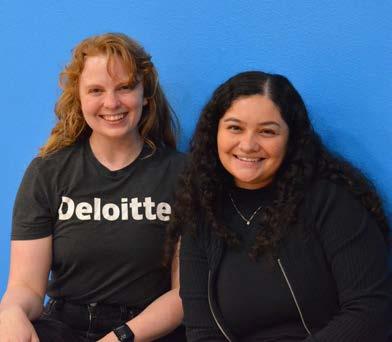
“
“ “
Practice and consistency are key! Working on the basics like passing and shooting in basketball is important for success. Similar to accounting, staying up to date with regulations takes consistent learning and practice to develop your skills.
— Edgar Paz, Allen Trust Company
I’ve always appreciated the team aspect of basketball. Everyone on the court needs to collaborate to achieve a common goal. I find a similar enjoyment in the taxation side of public accounting, where working together with colleagues and clients leads to fantastic results.
— Troy Banker, Geffen Mesher &

“
Company PC










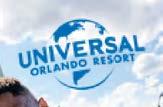









PROFESSIONAL DEVELOPMENT
Exploring Licensure & the CPA Exam –Webcast – #C24017
• November 15, 2024 | 10:00 a.m. - 12:15 p.m.
Get ready to become a CPA in Oregon! Reps from AICPA and Oregon Board of Accountancy will share Oregon’s new licensing changes plus details about the new CPA Exam.
Member Fee: Complimentary / Nonmember Fee: $20
Producer: Oregon Society of CPAs Register: www.orcpa.org/event/C24017
Questions? Contact Membership at 503-641-7200 / 800-255-1470, ext. 4; membership@orcpa.org
InfoBites Managing up: It’s Okay to Manage Your Boss (1 hour - afternoon) [NT] - NEW! – Webcast – #W80690
• November 20, 2024 | 12:00 p.m. - 1:00 p.m. | CPE: 1 [NT]
Bruce Tulgan’s framework challenges you to take responsibility for your role in every management relationship. This workshop provides the essential things you should get from your boss to ensure you succeed at work.
Member Fee: Complimentary / Nonmember Fee: $20
Producer: Oregon Society of CPAs Register: www.orcpa.org/event/W80690
Questions? Contact OSCPA at 503-641-7200 / 800-255-1470, ext. 3; profdev@orcpa.org

2024 OSCPA Professional Issues Update (4 hours - morning)3 Tech & 1 [NT]
• December 5, 2024 - In-person, OSCPA Center, Beaverton - #11184
• December 5, 2024 - Webcast - #W80449
Member Fee: $69 / Nonmember Fee: $119
CPE: 4 - 3 Tech & 1 [NT] / Level: 4 (Update)
Producer: Oregon Society of CPAs

Here’s what you’ll gain by attending:
• Accounting Profession Update
• Oregon Board of Accountancy Update
• Economic Update
• Oregon Legislative Update Register: www.orcpa.org/cpe and enter the event number
Questions? Contact OSCPA at 503-641-7200 / 800-255-1470, ext. 3; profdev@orcpa.org
2024 Federal Tax Update featuring Greg White & George Koutelieris


Topics will include:
Stay ahead of the curve in the ever-changing world of federal taxation by attending the OSCPA's 2024 Federal Tax Updates featuring the dynamic duo of Greg White and George Koutelieris. Greg and George will provide you with a fast-paced, thorough and easy-to-understand update on the recent Federal tax developments. You'll be able to confidently navigate the maze of 2024 tax developments. Don't miss your chance to learn from the best and network with fellow CPAs.
• Important IRS policy changes for first-time penalty abatement due to late filed tax returns.
• New final regulations on required minimum distributions and the penalty for failing to take a required minimum distribution.
◦ And when distributions are required in the year the IRA owner passes away.
◦ A strategy for reducing required minimum distributions.
• Preparing for “Taxmageddon”
◦ Strategies for reducing taxes as parts of TCJA are scheduled to expire.
• Important new Supreme Court cases that affect taxpayers.
• S corporation shareholder basis: A very taxpayer-friendly case.
• SECURE Act 2.0 updates, including Roth SEPs and Roth SIMPLE plans.
◦ And new reporting rules.

2024 Federal Tax Update featuring Greg White & George Koutelieris
• January 15, 2025 - In-person, Oregon Convention Center, Portland - #11186
• January 15, 2025 - Webcast - #W80452
• January 16, 2025 - In-person, Valley River Inn, Eugene - #11187
• January 16, 2025 - Webcast - #W80453
Member Fee: $320 / Nonmember Fee: $395
CPE: 8 / Level: 2 (Intermediate)
IRS CE: Pending Approval
Producer: Cutting Edge Tax Strategies LLC
Register: Scan the QR code or visit www.orcpa.org/cpe and enter the event number.
Questions? Contact OSCPA at 503-641-7200 / 800-255-1470, ext. 3; profdev@orcpa.org
Enter drawing for a free review course
Gleim Exam Prep is offering OSCPA members a chance to win a free CPA Review scholarship. The entry period is October 15 – November 30, 2024
• Only OSCPA student and candidate members eligible to win
• One entry per member
• Winner selected by random drawing
To enter: www.bit.ly/gleimdrawing
May we share your contact information with Gleim? We take your privacy seriously. Please indicate your preference on your form. The winner of the drawing must share their email in order to take advantage of the scholarship offer. Your membership status and contact information will be verified by OSCPA before it is submitted to Gleim.
Greg White, CPA-WA George Koutelieris, CPA-WA
SALT Mastery Series
A Deep Dive into State and Local Tax Topics
Unlock the secrets of effective state and local tax strategies with our comprehensive SALT Mastery Series! Elevate your expertise, stay ahead of legislative changes, and gain practical insights tailored for tax professionals. Join us for an in-depth exploration of advanced techniques, guided by industry-leading experts. Don’t miss this opportunity to master the complexities of SALT and transform your tax practices. Sign up today and take the first step towards becoming a SALT expert! There are 10 courses in the bundle. Each course is a stand-alone topic. If you miss one in the series, no worries! Purchase individual courses or purchase the SALT Mastery Series Bundle and save up to $140!
1. Oregon’s Pass-Through Entity Elective Tax (PTEE) (2.5 hours - morning) - NEW!
• October 30, 2024 - Webcast - #W80579
Member Fee: $69 / Nonmember Fee: $99
CPE: 2.5 / Level: 3 (Advanced)
Producer: Oregon Society of CPAs
2. Think Before You Act: Responding to State and Local Tax Notices and Audits (2 hours - afternoon) - NEW!
• November 8, 2024 - Webcast - #W80677
Member Fee: $69 / Nonmember Fee: $99
CPE: 2 / Level: 2 (Intermediate)
Producer: Oregon Society of CPAs
3. Oregon Corporate Activity Tax (CAT): Form and Substance Matter! (2 hours - afternoon) - NEW!
• November 15, 2024 - Webcast - #W80678
Member Fee: $69 / Nonmember Fee: $99
CPE: 2 / Level: 4 (Update)
Producer: Oregon Society of CPAs
4. Oregon Pass-Through Entity Elective Tax (PTE-E): Don't Miss a Deduction (2 hours - morning) - NEW!
• December 6, 2024 - Webcast - #W80679
Member Fee: $69 / Nonmember Fee: $99
CPE: 2 / Level: 3 (Advanced)
Producer: Oregon Society of CPAs
5. Income Tax Nexus and Apportionment (2 hours - afternoon) - NEW!
• December 10, 2024 - Webcast - #W80680
Member Fee: $69 / Nonmember Fee: $99
CPE: 2 / Level: 2 (Intermediate)
Producer: Oregon Society of CPAs
6. Sales Tax: Understanding Enough to Advise Clients (2 hours - morning) - NEW!
• December 20, 2024 - Webcast - #W80681
Member Fee: $69 / Nonmember Fee: $99
CPE: 2 / Level: 2 (Intermediate)
Producer: Oregon Society of CPAs
7. Protecting Yourself and Your Clients: Understanding the Implications of Remote Work and Licensing Requirements (2 hours - morning) - NEW!
• January 10, 2025 - Webcast - #W80682
Member Fee: $69 / Nonmember Fee: $99
CPE: 2 / Level: 2 (Intermediate)
Producer: Oregon Society of CPAs
8. Multnomah County / City of Portland Taxation Update (2 hours - morning) - NEW!
• January 21, 2025 - Webcast - #W80642
Member Fee: $69 / Nonmember Fee: $99
CPE: 2 / Level: 4 (Update)
Producer: Oregon Society of CPAs
9. City of Portland, Multnomah County, and Metro Taxes: Practitioner Perspectives (2 hours - late morning) - NEW!
• January 21, 2025 - Webcast - #W80644
Member Fee: $69 / Nonmember Fee: $99
CPE: 2 / Level: 4 (Update)
Producer: Oregon Society of CPAs
10. Oregon Department of Revenue Update (2 hours - afternoon) - NEW!
• January 24, 2025 - Webcast - #W80648
Member Fee: $69 / Nonmember Fee: $99
CPE: 2 / Level: 4 (Update)
Producer: Oregon Society of CPAs
To register for the bundle – #W80691: Scan the QR code or visit www.orcpa.org/cpe and enter the event number.
2024-25 Fall/Winter Conferences

November 6, 2024
In-person: Beaverton Webcast
In-person: Beaverton Webcast Financial & Retirement Planning Conference
Northwest Federal Tax Conference™(2 days)
November 12-13, 2024


December 5, 2024
In-person: Beaverton Webcast

January
State & Local Tax Conference
January 6, 2025
In-person: Portland Webcast


January 27, 2025 Webcast

